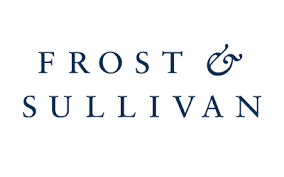Pioneering Hyperrealistic AI Image Generation
)
In this blog, we introduce AImagine, our AI image generator application. Discover its state-of-the-art features and technologies, and explore its seamless DevOps collaboration with Kubernetes and GCP.
In recent years, artificial intelligence has significantly impacted the way we interact with technology, opening up new possibilities in fields like image generation and manipulation. More and more people are seeking ways to harness the power of AI for creative expression and professional applications.
Responding to this growing demand, our team at CodeLink has developed AImagine, a state-of-the-art AI generative app. Delivering hyperrealistic results and offering an incredible level of customization, AImagine pushes the boundaries of image generation.
AImagine allows users to transform themselves and their surroundings into a vast array of imaginative scenarios, from astronauts exploring the cosmos to vampires lurking in the shadows, and even whimsical fairies gracing enchanted forests.
With just a few clicks, anyone can become the protagonist of their own fantastical world or immerse themselves in a scene straight out of their favorite movie or book.
In this blog, we introduce AImagine. We'll shed light on its state-of-the-art features and technologies. We'll delve into its seamless DevOps collaboration with Kubernetes and GCP while emphasizing our unyielding commitment to security and privacy. We'll also look into the exhilarating future prospects of AImagine's ongoing development.
The Rise of AI Image Generation and Market Gap
As AI continues to evolve, its applications in image generation have grown increasingly popular. People are captivated by the potential of using AI to create unique, customized images for personal or professional use.
Despite increased interest, however, the market struggles to provide high-quality services to truly harness the potential of AI image generation. Our team at CodeLink recognized this unmet need and set out to develop a solution: AImagine.
AImagine: Bridging the Gap with Cutting-Edge Technology
AImagine is a user-friendly platform enabling access to cutting-edge AI-generated images. The app leverages a synergy of innovative technologies, ensuring a seamless experience and delivering an unparalleled level of customization.
Stable Diffusion Model: The Core of AImagine
The stable diffusion model, an advanced AI algorithm, forms the heart of AImagine. This model allows the app to generate hyperrealistic images with captivating detail. Driving the app's capabilities, such as adding objects, repositioning people, and crafting distinctive, artistic scenes, AImagine surpasses the offerings of other AI image generation services.
Flutter: Crafting an Intuitive Front-End Interface
To ensure a smooth and enjoyable user experience, AImagine employs Flutter for its front-end interface. Flutter is a modern, open-source framework developers use to create high-quality, responsive user interfaces for both mobile and web applications.
With Flutter, AImagine's interface is not only visually appealing but also highly functional, making it easy for users to navigate the app and access its powerful features.
Python: Streamlining Server-Side Processing
For server-side processing, AImagine relies on Python, a versatile and widely-used programming language. Python is known for its simplicity and readability, making it an ideal choice for managing the complex tasks required for AI image generation.
By leveraging Python and orchestrating heavy computing tasks in the cloud, AImagine can efficiently handle user requests and quickly deliver high-quality, customized images.
Breaking Down the Process: How AImagine Works
To better understand the power of AImagine, let's break down the process into a few simple steps:
- User Input: Users begin by providing a base image, selecting a desired theme (e.g., astronaut, vampire, fairy), and specifying any additional customization options.
- AI Processing: AImagine's stable diffusion model processes the user input, generates the desired scene, and makes any necessary adjustments based on the user's customization preferences.
- Image Rendering: Once the AI processing is complete, the app's Python-based server-side processing renders the final image while making sure it meets the highest quality standards.
- User Delivery: The finished image is then delivered to the user, ready to be shared, downloaded, or further edited as desired.
AImagine offers an exceptionally cost-effective solution tailored to your needs. With a user-friendly pricing structure, you can choose the exact number of images you require, ensuring you only pay for what you need. Select from affordable packages of 50, 100, or 200 images and enjoy a personalized, budget-friendly experience.
DevOps: Kubernetes and GCP for Scalability and Efficiency
AImagine's success hinges not only on its innovative AI algorithms and user-friendly interface but also on the robustness and flexibility of its underlying infrastructure. To ensure the app remains performant and efficient, we built AImagine's DevOps around Kubernetes and the Google Cloud Platform (GCP).
In this section, we’ll delve deeper into the role these technologies play in the app's infrastructure and how they contribute to AImagine's scalability, efficiency, and reliability.
Kubernetes: Orchestrating Containerized Workloads
Kubernetes is a powerful container orchestration platform automating the deployment, scaling, and management of containerized applications. In the context of AImagine, Kubernetes is used to manage the app's cluster within GCP, ensuring resources are allocated effectively and the app's performance remains consistent under varying workloads.
The use of Kubernetes offers several key benefits for AImagine:
- Scalability: As user demand fluctuates, Kubernetes allows AImagine to seamlessly scale in and out. When there is a surge of requests, the platform can scale up the number of containers running the AI algorithms, accommodating the increased workload. When there are fewer requests, it scales down the number of containers to reduce GPU usage and minimize costs. To gain a deeper understanding of autoscaling GPU nodes and cost optimization, we invite you to read our dedicated blog on the subject.
- Resilience: Kubernetes monitors the health of AImagine's containers and automatically restarts any failed containers, ensuring the app remains available and functional for users at all times.
- Load Balancing: Kubernetes intelligently distributes incoming user requests across the available containers, optimizing resources and ensuring a smooth and responsive user experience.
Google Cloud Platform (GCP): Hosting AImagine's Infrastructure
The Google Cloud Platform (GCP) provides the underlying infrastructure on which AImagine's Kubernetes-managed clusters run. GCP offers a suite of cloud computing services we use to develop, deploy, and scale the app with ease.
By hosting AImagine on GCP, we can take advantage of the platform's powerful features, such as:
- Global Network: GCP's global network ensures low-latency access to AImagine for users around the world, delivering a consistently fast and responsive experience.
- Data Storage: GCP provides reliable and scalable storage solutions, allowing us to store and manage the data required for AImagine's AI algorithms and other app components.
- Security: Google Cloud's advanced security features help protect AImagine's infrastructure and user data, ensuring the app remains secure and compliant with industry standards.
By leveraging the capabilities of Kubernetes and GCP, AImagine can efficiently handle fluctuating workloads, maintain high availability, and deliver an exceptional user experience. These technologies play a crucial role in AImagine's ability to provide a reliable and cost-effective AI image generation service.
Security and Privacy: Our Commitment to Users
In today's digital landscape, security and privacy are of paramount importance–particularly when dealing with AI-generated images and user data. At CodeLink, we recognize these concerns and can assure users AImagine not only provides a secure environment but also respects users' privacy.
Our commitment to security and privacy is demonstrated in the app through several key aspects:
- No Ownership Claims: CodeLink does not claim ownership over any images generated by AImagine. The images created using our app belong solely to the users, ensuring their creative work and intellectual property remain protected.
- No Data Storage: We designed AImagine in a way that does not require the storage of user-generated images on our servers. Once an image is created and delivered to the user, it is removed from our system. This approach helps to safeguard user privacy and further demonstrates our commitment to respecting users' data.
- Data Encryption: To protect user data during transmission, AImagine employs robust encryption techniques. Any information exchanged between the app and the user remains secure.
- Regular Security Audits and Updates: We continuously monitor and assess the security of AImagine, conducting regular audits and updates with the latest security best practices.
- User Control: AImagine gives users the power to manage their data and the app's features. It's easy for users to adjust preferences and settings within the app, offering them the freedom to decide how their data gets used and accessed.
With a strong focus on security and privacy, AImagine lets users dive into the world of AI-generated images confidently and worry-free. We're committed to upholding a safe and privacy-aware environment, and we'll keep adapting our practices to tackle new challenges and seize opportunities as they emerge.
The Future of AImagine
Our team at CodeLink is dedicated to continuously enhancing and expanding AImagine's capabilities to provide our users with the most advanced AI image generation experience possible.
As we look to the future, we have several exciting developments planned to further elevate the app's customization potential and cement AImagine's position as the industry's leading AI image generation service.
Integration of ControlNet Technology
A key development on the horizon for AImagine is the integration of ControlNet technology. This innovative feature will provide users with even greater control over image generation, allowing for more precise and nuanced customization.
By incorporating ControlNet, AImagine will empower users to fine-tune their image generation settings, enabling them to achieve their desired results with even greater accuracy and consistency.
Continued Focus on Security and Privacy
As AImagine evolves, we remain steadfast in our commitment to security and privacy. Our users can continue to enjoy the app with confidence. This involves staying up-to-date with the latest industry standards, implementing best practices, and regularly reviewing and refining our security measures.
By incorporating these advancements and continually pushing the boundaries of what’s possible with AI image generation, AImagine is poised to redefine the industry and provide users with an unparalleled creative experience. We’re excited about the future of AImagine and look forward to sharing these innovations with our user community.
Conclusion
AImagine breaks new ground in the AI image generation arena, presenting users with an extraordinary degree of customization and strikingly realistic results.
By harnessing the power of cutting-edge technologies like Kubernetes and the stable diffusion model, AImagine ensures scalability, efficiency, and security. Moreover, our dedication to user privacy and data protection allows users to confidently unleash their creativity using AImagine's vast array of features.
In the dynamic world of AI image generation, AImagine distinguishes itself as an innovative leader, equipping users with a robust, intuitive, and secure platform to transform their creative visions into reality. We’re wholeheartedly committed to pushing the limits of what’s possible and cultivating a thriving community of creative minds. Stay tuned for more updates and pioneering innovations from the enthusiastic team at CodeLink, as we continue to reshape the future of AI-generated images.


 Cloud & AI Infrastructure
Cloud & AI Infrastructure
 DevOps Live
DevOps Live
 eCommerce Expo | DMEXCO Asia
eCommerce Expo | DMEXCO Asia

)
)
)
)
)
)
)
)
)
)
)
)
)
)
)
)
)
)
)
)
)
)
)
)
)
)
)
)
)
)
)
)
)
)
)
)
)
)
)
)
)
)
)
)
)
)

)
)
)
)
)
)
)
)
)
)
)
)
)
)
)

)
)
)
)
)
)
)
)
)
)
)
)
)
)
)
)

)
)
)
)
)
)
)
)
)
)
)
)
)
)
)
)
)
)
)
)
)
)
)
.png/fit-in/1280x9999/filters:no_upscale())
)
)
)
)
)
)
)
)
)
)
)

)
)
)
)
